Category: Intellectual Property
What to Consider When Choosing a Translation Service

When venturing into international markets, selecting an exemplary translation service is a crucial decision that can significantly impact your business’s success.
Effective communication across different languages and cultures is essential for maintaining your brand’s integrity and engaging with a global audience. At Morningside, we understand the nuances of comprehensive legal, life science and corporate language solutions and the importance of precision in translation. Our expertise ensures that your message is conveyed accurately, helping you seamlessly achieve your international business objectives.
In this blog we will explore what you should consider when choosing a translation service and cover some helpful tips along the way.
Reputation: Trust and Credibility
The reputation of a translation service is paramount. A provider with a strong reputation offers reliability and trustworthiness, which are crucial factors when investing in professional translation services. Start by researching the company’s background, including its history and longevity in the industry. Look for certifications that signify adherence to high standards, such as ISO certifications for translation services. These credentials demonstrate the company’s commitment to quality and professionalism.
Tip: Explore client testimonials or case studies that the company may have received. Such accolades can further validate their reputation and expertise in the field. Look for reviews that discuss the accuracy of translations, the responsiveness of customer service, and the ability to meet deadlines. Positive feedback from previous clients indicates the service’s reliability and effectiveness. Additionally, consider contacting past clients for direct insights into their experiences.
Experience: Specialized Knowledge and Expertise
Experience is crucial in selecting a translation service, especially if your project involves specialized content. Whether you require translation for legal documents, technical manuals, or marketing materials, choosing a provider with expertise in your field is essential. Experienced translation services understand the relevant terminology and appreciate the nuances and context of your content, ensuring that your message is accurately conveyed.
Tip: Consider the provider’s proficiency with the specific language pairs you require. A deep understanding of source and target languages and their cultural contexts is vital for effective translation. Ensure that the service offers localization to adapt your content to the cultural and contextual nuances of the target market, making it more relatable and engaging for local audiences.
Verify if the translation service employs native speakers for both the source and target languages. Native speakers can offer a more nuanced and culturally accurate translation, enhancing the overall quality of the service.
Communication: Engagement and Support
Effective communication throughout the translation process is essential for a smooth and successful project. Look for providers that offer multiple communication channels, such as dedicated project managers, customer support teams, and client platforms. These channels facilitate prompt responses to your queries and ensure you stay informed about the project’s progress.
Tip: Assess the provider’s communication protocols and responsiveness. A service that offers regular updates and proactively addresses issues will help ensure your project runs smoothly and meets your expectations.
Moreover, evaluate the provider’s willingness to customize their services according to your needs. A flexible approach can accommodate specific requirements, such as adjusting project scope, deadlines, or special formatting needs. Strong communication and support contribute significantly to a positive client experience and the overall success of the translation project.
At Morningside, we pride ourselves on delivering high-quality translation services tailored to your needs. Our commitment to accuracy, cultural relevance, and exceptional customer support ensures that we provide comprehensive solutions that drive your success in the global marketplace. Whether you need translation for legal documents, marketing materials, or technical content, our team of experts is equipped to handle your project with precision and expertise.
Selecting an exemplary translation service involves carefully considering the provider’s reputation, experience, and communication practices. By focusing on these critical factors, you can ensure that your translations are accurate, culturally appropriate, and effectively support your international business efforts.
About Morningside
Morningside, a Questel Company, is a recognized leader in comprehensive language solutions. We provide a full suite of services, including document translation, interpretation, website localization, and multilingual marketing support. We deliver customized solutions based on your needs, utilizing industry-leading technology for accuracy, lower costs, and faster turnaround times.
Ready to elevate your global presence? Contact us today to ask any questions you may have or to get started on your translation project. Our dedicated team is here to provide the support and expertise you need to achieve your international business goals. Let us help you navigate the complexities of global communication with confidence.
Get the latest insights delivered to your inbox
8 Essential Areas for Professional Business Translation Services

Expanding your brand into foreign markets is exciting, but effective communication is crucial for success. It helps to communicate with that new audience in their own language. However, speaking their language is not limited to verbal or written cues. It also involves cultural nuances, context, and local preferences.
A professional language services provider (LSP) can help you cater your business content to ensure you connect with as many customers as possible worldwide. Below, we will uncover the eight most common areas where professional business translation services are essential, why they matter, and how to choose a reliable provider.
1. Marketing Material
Professional translations and localization of your advertising collateral, taglines, product packaging and multimedia presentations will help promote your products and services worldwide while ensuring that what you mean to say is actually communicated to each distinct audience.
Effective marketing relies on resonating with your audience. Translations must capture the essence of your message while adapting it to cultural nuances. This ensures that slogans, imagery, and brand messages are relevant and engaging to local consumers.
Some countries have specific advertising regulations. For instance, the European Union has directives for advertising, and countries like China have stringent laws about content. Ensure compliance with local advertising standards to avoid penalties and build trust in their language.
2. Website Translation
Allowing customers to do business in their preferred language is a proven way to increase interest in your products and services.
Offering content in the local language increases engagement and builds credibility. Website Localization should also consider cultural factors like colors, imagery, and idiomatic expressions to enhance user experience and SEO performance.
Data protection laws like GDPR in Europe affect how websites collect and manage user data. Ensure that translated privacy policies and terms of service comply with local regulations.
3. Desktop Publishing
Format the different language versions of your website and marketing collateral to look graphically consistent across all applications, making every audience feel like the content they’re looking at was created just for them.
Consistency in design across languages enhances brand perception. Desktop publishing ensures that the layout and visual appeal are maintained in all languages, making the content look professional and tailored for each market.
4. Technical Documents
Translate technical documentation such as product information, software manuals, operating manuals, contracts, and export and import documentation into the languages of the end users to prepare your products for global consumption.
Accurate translations are vital for user safety, regulatory compliance, and operational efficiency. Misunderstandings due to poor translation can lead to legal issues, customer dissatisfaction, and operational failures.
Compliance with local standards for product safety and documentation is mandatory. For example, the EU has specific directives for product labeling and instructions, and the US has its own standards for technical documentation.
5. Legal Documents
Manage legal risk by obtaining 100% accurate translations of patents, court filings, discovery documents, litigation files, merger and acquisition records, and antitrust matters.
Legal translations must be precise and unambiguous to prevent misunderstandings and legal disputes. Accurate translations of legal documents are crucial for protecting intellectual property, managing risks, and ensuring compliance with local laws.
Each jurisdiction has its legal requirements. For example, patent translations must meet the guidelines of the local patent office, and contracts must be translated according to local contract law to be enforceable.
6. Financial Information
Provide product information, financial statements, investor relations communications, annual reports and prospectuses in multiple foreign languages to attract new investors.
Providing financial information in multiple languages helps attract global investors and maintain transparency. Accurate financial translations are essential for compliance, investor confidence, and strategic planning.
Financial reporting standards like IFRS or local GAAP must be adhered to, and documents often need certified translations to be accepted by regulators and investors.
7. Interpretation Services
Ensure complete comprehension in legal, corporate, medical and government settings with qualified and vetted interpreters who can make simultaneous, consecutive interpretations to help you easily communicate in person or over the phone.
Professional interpretation ensures clear communication in high-stakes environments. This is crucial for negotiations, legal proceedings, and medical consultations where accuracy and real-time communication are essential.
Specific legal and medical sectors may require certified interpreters to meet regulatory standards and ensure confidentiality and accuracy.
8. Internal Documents & eLearning
Ensure all your employees, franchisees, and third-party vendors fully understand your company’s policies and procedures, employee handbooks, onboarding materials, interactive eLearning programs, company announcements, and other human resources documents by providing quality translations in the local language of each office.
Effective internal communication promotes compliance, efficiency, and a cohesive corporate culture. Translating internal documents ensures that all employees understand company policies and procedures regardless of location.
Employment laws may require certain documents to be available in the local language, and training materials must comply with local regulations on employee rights and safety.
Choosing a Translation Provider
When selecting a translation provider, consider the following:
- Expertise: Look for providers with experience in your industry and the specific types of documents you need to have translated.
- Quality Assurance: Ensure the provider follows ISO standards for quality management, such as ISO 9001, 13485, and 17100.
- Technology: Using advanced translation tools and technologies can enhance accuracy and efficiency.
- Global Network: A robust network of in-country linguists ensures that translations are culturally relevant and contextually accurate.
- Client Support: Strong client support and project management capabilities are essential for handling complex translation projects efficiently.
Why Morningside?
Morningside, a Questel Company, offers comprehensive translation services across various industries, ensuring your message is accurately conveyed in over 200 languages. We specialize in highly regulated legal, life sciences, corporate compliance, and intellectual property sectors. Our global network of 8,000+ translators, including subject matter experts, is backed by industry-leading technology and certified to the latest ISO standards.
Contact Us Today!
Ready to take your business to the global stage? Contact us for expert translation services that can help you connect with new markets and audiences. Let us help you translate your ideas into success.
Get the latest insights delivered to your inbox
When to Use Interpretation vs. Translation
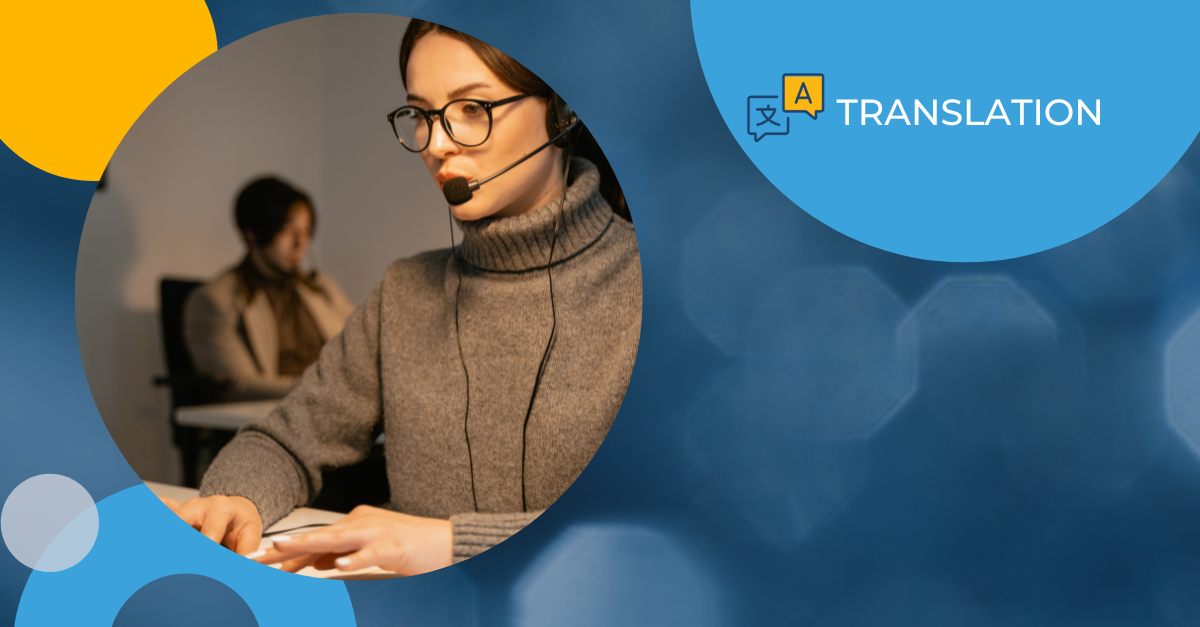
As global interactions increase, the need for accurate language services becomes paramount. As a leading language solutions provider, we know that people can be uncertain about the difference between — and appropriate use of — interpretation services and translation services. Understanding when to use interpretation versus translation is crucial for effective communication.
Both are forms of conveying meaning from one language into another — and both require highly developed language skills — but they are two very different things. This blog explores the differences between these services and offers insights into choosing the right provider.
Understanding Interpretation and Translation
Interpretation and translation both involve converting meaning from one language to another, but they serve distinct purposes. Interpretation focuses on spoken language, facilitating real-time communication, while translation deals with written text, ensuring precise adaptation of content.
What is Interpretation?
Interpretation is the process of converting spoken language from one language to another in real-time or with a slight delay. It is used in various settings, including conferences, business meetings, medical appointments, and legal proceedings. Interpreters must quickly distill and convey the essential meaning of the original speech, capturing tone, nuance, and intent on the spot.
What is Translation?
Translation involves converting written text from one language to another. Unlike interpretation, translation allows time for careful consideration, consultation with subject matter experts, and the use of resources like dictionaries. Translators focus on accuracy and completeness, adapting every detail of the original text to the target language.
Key Differences Between Interpretation and Translation
Timing
Interpretation occurs immediately as the speaker delivers the message. Interpreters must work in real time, making quick decisions to convey meaning without the opportunity to revise.
Translation, on the other hand, occurs after the original text has been created. Translators have the advantage of time, which allows them to refine and perfect their translations with access to reference materials and expert consultations with subject matter experts.
Accuracy
In interpretation, accuracy means faithfully conveying the core message while often omitting non-essential details to maintain flow and clarity.
In translation, accuracy involves a meticulous rendering of every element of the text, ensuring that the translation captures the full meaning and nuances of the original document.
Fluency
Interpreters need to be fully fluent in both the source and target languages, enabling them to switch seamlessly between languages. They must also understand cultural expressions, metaphors, and slang.
Translators typically work into their native language, ensuring a deep understanding of the target language while having a strong grasp of the source language. This allows them to use reference materials to achieve a precise translation.
Handling Subtleties
Interpreters must navigate verbal nuances such as tone, pitch, and inflection, as well as cultural expressions. They convey these elements to ensure the speaker’s intent is clear.
Translators must recognize idioms, metaphors, and cultural contexts in the original text and adapt them appropriately in the translation to maintain the intended meaning.
Types of interpretation
There are two main modes of interpretation:
Simultaneous interpretation occurs in real time, with the interpreter converting the speaker’s words as they are spoken. This method is used in multilingual conferences, where interpreters might work from booths, listening through headphones and speaking into microphones. The instantaneous nature of simultaneous interpretation makes it essential for meetings, conferences, and legal or medical settings.
Consecutive interpretation occurs when the speaker periodically pauses to allow the interpreter to convey the recent segment of speech before continuing. This method is commonly used in business meetings, legal proceedings, and medical consultations. The interpreter typically stands or sits next to the speaker, taking notes to relay the message accurately.
Both types of interpreters should understand the subject matter at hand. In a hospital context, there are medical interpreters; in a courtroom, there are interpreters who specialize in legal interpretation – all of whom must convey thoughts and concepts clearly and work well under pressure.
Steps in Professional Translation
Professional translation involves a multi-step process that combines human expertise and technology to ensure high-quality results. The process begins with converting the source material into a format compatible with Translation Memory (TM) software. TM software helps maintain accuracy and consistency by retrieving previously translated text that matches the current content.
A human translator then reviews and corrects these matched sections and translates any remaining unmatched content. A second translator then conducts a thorough proofing and editing phase to ensure accuracy and coherence. The final step involves desktop publishing, which restores the document’s original design and layout.
Utilizing Machine Translation
Machine Translation (MT) can provide a basic understanding of a document. MT is often paired with human post-editing for projects requiring higher quality but limited by budgets. This approach effectively balances cost and quality.
Choosing Morningside for Interpretation and Translation
Morningside equips the world’s leading organizations with accurate, high-quality, professional translation services. We specialize in highly regulated industries, including legal, life sciences, corporate compliance, and intellectual property. Our services help your ideas reach new markets and audiences while allowing you to maximize your budget.
Our global network of over 8,000 vetted translators includes subject matter experts (SMEs) in various technical fields and practice areas. Supported by industry-leading technology and a quality management system certified to ISO 9001, 13485, and 17100 standards, we ensure that complex materials are translated into over 200 languages with precision and expertise. We cater to Global 500 companies, international law firms, and regulatory bodies, delivering reliable and accurate language solutions.
Why Choose Morningside?
Choosing Morningside, a Questel company, for your interpretation and translation needs means partnering with a trusted provider that prioritizes quality and accuracy. Our specialized services in highly regulated industries ensure compliance and reliability. With a vast network of professional translators and interpreters, advanced technology, and rigorous quality control processes, Morningside is your ideal partner for effective communication across languages and cultures.
Conclusion
Effective communication across languages is essential in our globalized world. By understanding the differences between interpretation and translation and selecting the right service for your needs, you can ensure your message is conveyed clearly and accurately. Morningside’s expertise in both services, supported by a robust network of professionals and cutting-edge technology, makes us the perfect choice for your language solutions.
Get the latest insights delivered to your inbox
What is a Professional Language Partner, and When Do You Need One?
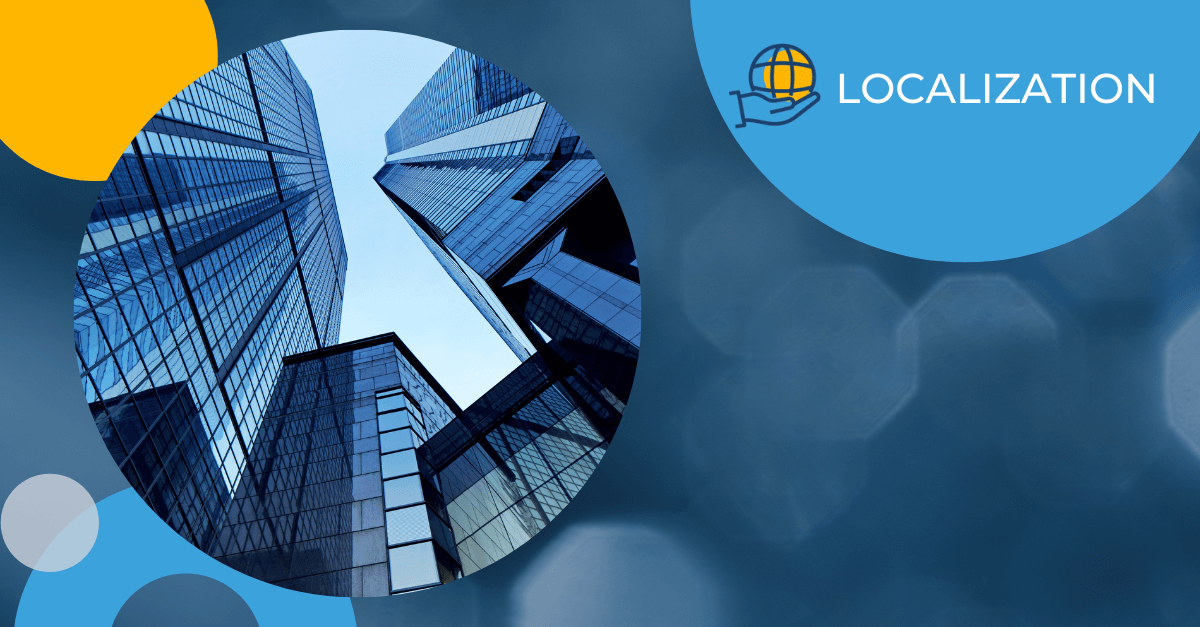
Understanding a Professional Language Partner
In an increasingly interconnected world, effective communication across languages and cultures is not just advantageous but essential for businesses aiming to thrive globally. A Professional Language Partner (PLP) plays a pivotal role in enabling this seamless communication by offering a spectrum of specialized language services. From translation and localization to interpretation and cultural adaptation, PLPs ensure that businesses can convey their messages accurately and resonate with diverse audiences worldwide.
When Should You Engage a Professional Language Partner?
Recognizing the right time to engage a Professional Language Partner is crucial for businesses operating in international markets or diverse environments. Here are scenarios where a PLP’s expertise is particularly valuable:
- Global Market Expansion: A PLP ensures that your content resonates with local audiences through accurate localization when entering new international markets.
- Regulatory Compliance: Accurate translations are essential for compliance with local regulations in legal, healthcare, and finance industries.
- Multilingual Customer Support: A PLP provides support in multiple languages, enhancing customer satisfaction and loyalty.
- International Events: Professional interpretation services facilitate smooth communication for global conferences and meetings.
- Technical and Specialized Content: Translating complex materials like technical manuals or legal documents requires specialized knowledge to ensure precision.
To fully benefit from these scenarios, it’s important to choose a PLP that meets your specific needs and standards.
Key Factors to Consider When Choosing a Professional Language Partner
Selecting the right PLP is essential for ensuring effective communication and high-quality results. Consider these factors when making your choice:
- Industry Expertise and Specialization: Choose a PLP with experience in your specific industry or content type to ensure accuracy and relevance.
- Quality Assurance Processes: Ensure the PLP adheres to rigorous quality control standards and holds its processes to certification standards such as ISO 9001, 13485, and 17100.
- Advanced Technology Integration: Opt for a PLP that uses technology like Translation Memory (TM), Machine Translation (MT), and Terminology Management to enhance efficiency and consistency.
- Global Translator Network: A broad network of native-speaking translators ensures accurate adaptation for different regions.
- Reputation and Client References: Check reviews, case studies, and testimonials to assess the provider’s reliability and performance.
Understanding these factors will help you make an informed decision, but it’s equally important to understand the distinctions between translation and localization to tailor your approach effectively.
Translation vs. Localization: Key Differences and Applications
The PLP you approach will have technical jargon like translation and localization, but what does that mean? Understanding the difference between translation and localization is crucial for effective international communication:
Translation involves converting text from one language to another, focusing on preserving the original meaning and context. For instance, translating a user manual from English to Spanish ensures that the instructions are comprehensible to Spanish-speaking users.
Translation is ideal for straightforward text conversion, such as legal documents, technical manuals, or scientific articles, where minimal cultural adaptation is required.
Localization goes beyond translation by adapting content to fit the cultural, regulatory, and linguistic norms of the target audience. This can include changing date formats, units of measurement, idiomatic expressions, and cultural references. For example, localizing a marketing campaign for a specific country involves adjusting images, slogans, and product names to align with local preferences.
Localization is essential for content that interacts directly with the target audience’s cultural norms, such as websites, software, marketing materials, and multimedia content.
Knowing whether your needs align more with translation or localization helps determine the right moment to engage a Professional Language Partner for your specific translation services.
Optimal Timing to Approach a Professional Language Partner for Translation
Timing is crucial when engaging a PLP for translation services. Here’s when you should consider reaching out:
- During Project Planning: Early engagement helps plan and integrate translation needs into the project workflow. This approach ensures translation is a core part of the project, not an afterthought.
- At Product Development: When developing new products for global markets, incorporating translation from the start aligns product features with local requirements and regulations.
- Pre-Launch Phase: Before launching a product or service in a new market, having translated and localized content ready is critical for a successful introduction.
- For Regulatory Filings: In industries like pharmaceuticals, legal, and finance, translation is often required for regulatory submissions and compliance documents.
By strategically timing your engagement with a professional language partner, you can ensure a smoother process and better results. To maximize these benefits, consider partnering with a trusted provider like Morningside.
Partner with Morningside for Your Language Solutions
Effective global communication demands more than just translation—it requires expertise, precision, and cultural sensitivity. As you navigate the complexities of international markets, partnering with a reliable PLP is essential.
Morningside, a Questel Company, equips the world’s leading organizations with accurate, high-quality, professional translation services. We specialize in highly regulated industries, including legal, life sciences, corporate compliance, and IP. We help your ideas reach new markets and audiences while allowing you to do more with your budget. Our global network of 8,000+ vetted translators includes subject matter experts (SMEs) in various technical fields and practice areas. Morningside is supported by industry-leading technology and a quality management system certified to the latest ISO 9001, 13485, and 17100 standards. We translate complex materials into 200+ languages for Global 500 companies, international law firms, and regulatory bodies.
Ready to expand your reach? Contact Morningside today to discover how we can support your global communication needs.
Get the latest insights delivered to your inbox
5 Essential Strategies to Streamline your Translation Process
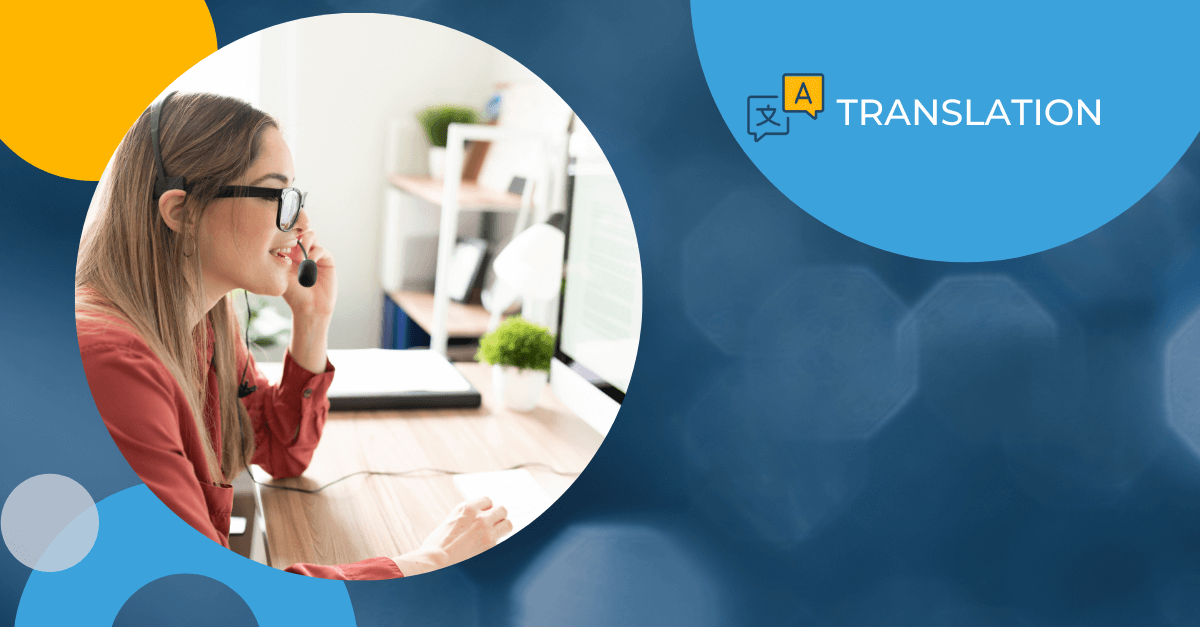
In today’s globalized market, the accuracy and quality of your translations can make or break your brand’s reputation. Whether expanding into a new territory or refining your messaging for diverse audiences, precision in document translation is not merely a box to check but a critical component of your market strategy. A flawless translation ensures that your message resonates, maintains the professionalism of your brand, and paves the way for successful international expansion.
We understand the complexities you face as you prepare to enter new markets. That’s why we’ve compiled essential strategies to streamline your translation process and avoid common pitfalls. Implementing these steps will enhance the quality of your translations, reduce costs, and expedite your market entry.
Here are five steps you can take to ensure your translation process runs smoothly.
1. Provide Enough Time
Time is everything, and whether you are tackling document translation, patent translation, medical translation, or website localization, you must give yourself enough time to perfect it. You want to ensure that the translator or translation company has enough time to thoroughly research the subject matter, prepare the translation, and revise and proofread until the final draft is perfect.
Collaboration is key. The more time you have with your translator, the more likely you’ll be on the same page. Effective teamwork and communication are key to localization and translation success.
Tip: If you know that you will need a translation and you want to contact a professional translation company, speak with them as early as possible so that they can build a custom workflow for your project and find the ideal translator.
2. Create a Translation Glossary and Style Guide
A translation glossary and style guide are helpful cheat sheets for linguists to understand your company better. A translation glossary includes the company’s “lingo,” which should stay consistent throughout, and words that should not be translated, such as product names. A style guide describes how a company should be presented visually and textually, as well as the overall style and tone. In short, it identifies those branding elements that must remain, no matter the locale. A translation glossary and style guide for linguists can help ensure consistency. Without this, words and phrases can be translated in multiple ways across different languages, meaning more time is spent revising translations to create consistency. A glossary and style guide can help with consistency reduce the time it takes to complete each document translation, and cut costs.
3. Don’t Use Multiple Linguists
You might think that using many linguists for large projects will speed up the process, but it could have a negative impact on the overall quality and cohesion of the project. Why is that? The more linguists involved, the more prone you’ll be to inconsistencies in the translation. Beyond each linguist’s style and tone, many words have multiple translations that could fit in a given language, and consistency is critical when delivering a message and building a brand. This is especially true if you want to keep with a specific and notable brand image or content style used in the past. The same also applies to your proofreader – give one person enough time instead of forcing the issue with multiple people.
4. Provide All of the Details
The more information you can provide to your translator or translation company, the better. Including more details in the translation also allows the service to choose a translator with expertise in that field more accurately.
When you approach your LSP, you should consider providing your project’s scope, purpose and audience, context and any reference materials, quality expectations, and project timeline.
Providing these details helps the translation provider understand your needs thoroughly and deliver a translation that meets your specific requirements. This comprehensive briefing ensures quality and fosters a more collaborative and efficient translation process.
5. Use Translation Memory Tools
Translation memory tools can store segments, such as sentences, titles, headings, and phrases and create a database for future projects. This helps save time and money for project updates or new content translations. It enforces consistency throughout all project versions and cuts time because the linguists don’t have to spend time re-translating the same thing repeatedly. Morningside works with expert providers, which has helped tremendously reduce client costs.
A high-quality translation is critical to bringing your product or service to a new market, and a poorly executed translation can cost you business. By following the above tips, you can improve the quality of your translation, lower costs, and make your entry into new markets more accessible.
Navigating the intricacies of translation is crucial for any business aspiring to thrive in global markets. As illustrated by our outlined strategies, a meticulous approach to document translation can substantially enhance your brand’s international appeal, ensuring consistency, accuracy, and resonance with diverse audiences. It’s not just about converting words from one language to another; it’s about maintaining the essence and professionalism of your brand in every market you enter.
At Morningside, we specialize in transforming complex translation challenges into streamlined solutions tailored to your needs. Our commitment to quality and innovation helps you overcome linguistic barriers and expedite your market entry—partner with us to safeguard your brand’s integrity across languages and cultures. Contact us today to elevate your translation strategy and expand into new global territories.
About Morningside
Morningside, a Questel Company, equips leading organizations with a full suite of end-to-end language solutions. With over 4,000 clients in 55 countries, Morningside is globally recognized for its subject matter expertise and technology innovation in regulated markets such as legal services, life sciences, corporate compliance, and IP services. Our translation, localization and interpretation expertise equips leading global organizations with the tools to operate seamlessly in foreign markets, overcome regulatory hurdles and connect with audiences worldwide. Global 500 companies, international law firms, and regulatory bodies rely on us as a trusted partner to make intelligent choices for their most valuable assets.
Get the latest insights delivered to your inbox
Translation Quality Standards – What Are They?
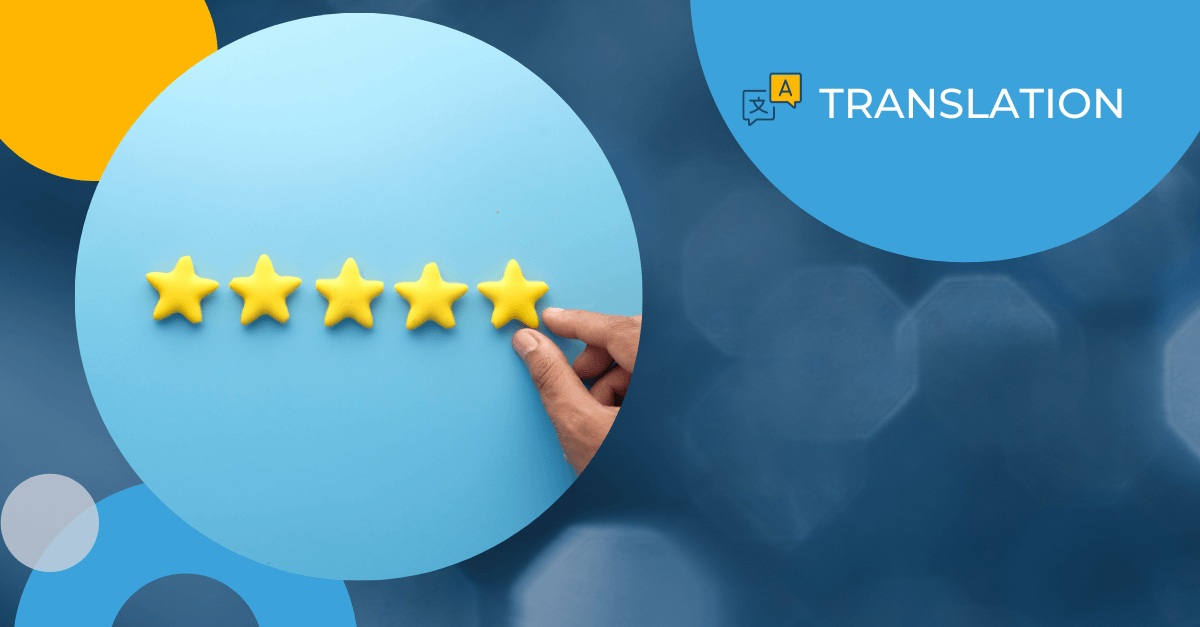
When beginning the process of partnering with a professional language services provider (LSP), you will hear a lot about the quality of translations provided – at least, you should. This leads to the question of what are translation quality standards.
According to the International Organization for Standardization (ISO), quality can be defined as “the totality of features and characteristics of a product or service that bears its ability to satisfy stated or implied needs.” In the case of translation, quality can be defined as the success of the translation in accurately capturing and conveying the information and intent of the source document.
Translation quality becomes mission-critical in domains such as medical, legal, accounting, technical documentation, and intellectual property (IP). Poor-quality translations could cause a loss of business value and, in some cases, even a loss of life.
What is an ISO Standard?
ISO standards set out various business processes and best practices internationally agreed upon by experts. ISO standards for translation quality focus on establishing and maintaining a process of translation, review and approval that, when followed diligently by qualified professionals, will consistently result in reliable, accurate translations and meet the requirements of the customer’s use case.
Two Examples of ISO Quality Standards
ISO 9001:2015 is the world’s most widely recognized quality management standard. ISO 9001 outlines ways to achieve consistent performance and service at all levels. Achieving this certification means a company has created a quality system with a framework for better customer satisfaction, staff motivation and continuous improvement.
ISO 17100:2015 is an international quality standard set precisely for the translation industry. It defines the requirements for the core processes, resources and other aspects necessary for delivering a quality translation service. Certification to ISO 17100 showcases a translation company’s high level of commitment to meeting client and industry requirements.
Industry-Specific Translation Quality Standards: A Medical Example
Some industries have specific translation quality needs that more generalized quality standards cannot meet. A good example is ISO 13485:2016, which specifies requirements for a quality management system. This standard requires an organization to demonstrate its ability to provide medical devices and related services, such as translation, that consistently meet customer and applicable regulatory requirements to remain compliant.
ISO 13485 can also be used by suppliers or external parties that provide products or services to such organizations. LSPs, like Morningside, certified to ISO 13485, collaborate with medical device companies to determine risk management for all medical device translations. With the LSP implementing processes that reduce the potential for product risks, the medical device company reduces its exposure to compliance and legal issues, not to mention the risk to customers.
International Standard for Security Management
ISO 27001:2013 is an extensive framework of requirements for “establishing, implementing, maintaining and continually improving an information security management system.” It ensures that business information is handled confidentially and securely and that appropriate care is taken to mitigate risks compromising client data integrity.
Morningside is the world’s first significant patent translation and filing company to obtain this certification. We are one of only a handful of LSPs to have achieved it. Achieving this prestigious certification is no small feat and demonstrates a complete commitment to client data, systems, and processes.
It’s all about the people and the process
Translation quality standards play an essential role, but they are no substitute for providing ongoing training and feedback to translators, as well as arming translators and editors with the necessary resources and information on the subject matter, the context in which the translation will be used, etc. Translation teams equipped with glossaries, style guides, support materials, and contextual information can produce a much higher quality translation than those just handed a text with no background.
About Morningside, A Questel Company
Morningside, a Questel Company equips the world’s leading organizations with accurate, high-quality, professional translation services. We specialize in highly regulated industries, including legal, life sciences, corporate compliance and IP. We help your ideas reach new markets and audiences while allowing you to do more with your budget. Our global network of 8,000+ vetted translators includes subject matter experts (SMEs) in various technical fields and practice areas. Morningside is supported by industry-leading technology and a quality management system certified to the latest ISO 9001, 13485 and 17100 standards. We translate complex materials into 200+ languages for Global 500 companies, international law firms, and regulatory bodies.
Get the latest insights delivered to your inbox
IP Courses: L&D Training for the Enterprise
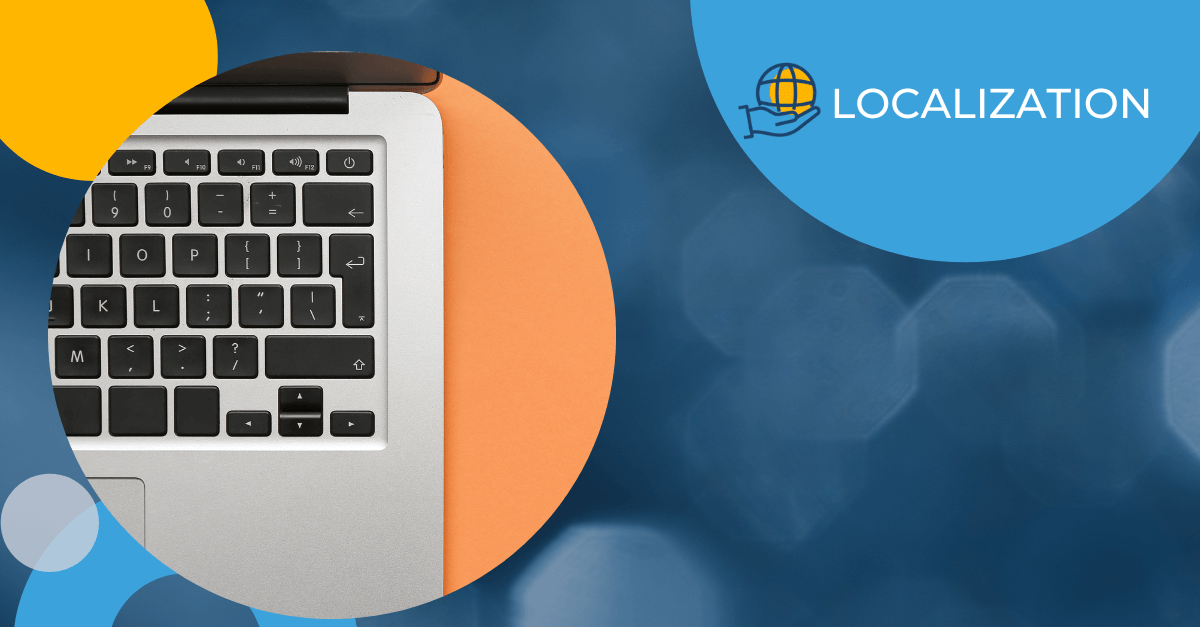
Many of our dedicated learning and development (L&D) clients seek engaging ways to educate their enterprise through online (eLearning) corporate training. These influential training videos range from workplace conduct to cyber security and privacy. But what if we told you there was a way you could set your organization apart from any other? Engaging in intellectual property courses can nurture workplace development and drive your organization’s next phase of growth and opportunity.
Not just a decision for the boardroom or executive suite
Corporate boardrooms and executive suites all over the world are filled with energy, enthusiasm, and heady conversations as they integrate intellectual property strategies into their business plans. Companies integrate intellectual property strategies to build and exploit all the right intangible assets, such as patents, trade secrets, trademarks/brands, copyrights, licensing agreements, and defensive publications.
Your organization’s intellectual property assets provide legal means to prevent competition from adding features or using methodologies to ingredients your organization employs to be unique.
Bright, experienced, and successful L&D experts succeed in almost every aspect of eLearning planning. L&D teams are the center of corporate training, with the most significant ability to implement eLearning programs efficiently and effectively. However, intellectual property is notably missing from the long list of eLearning courses initiated by L&D teams despite being arguably the most important.
Why? Because intellectual property touches every part of a business. From the creation, management, and commercial exploitation of intangible assets to non-traditional tasks of those who must carry them out means engineers, research and development, sales, marketing, procurement, legal and finance teams and every department in between needs dedicated intellectual property courses. So, the genuinely brilliant L&D team members, who thoroughly understand the risks and opportunities associated with intellectual property (IP), can expect plans to be carried out by everyone across their enterprise. They may not know what IP stands for, much less what IP means to them or their company. It’s a fatal disconnect.
Who can get involved in initiating enterprise-wide intellectual property courses?
What about the intellectual IP department, the executive suite or board members? Yes, many companies have IP departments and upper-level management. But, for every thousand employees, there might be one IP professional…perhaps none. And, those few IP professionals have jobs occupying them full-time each week.
They do not have the time or resources (or superpowers) necessary to sit next to every employee all-day/every day and counsel them about IP risks or opportunities that appear as each employee carries out their daily tasks.
What about having the IP department create enterprise intellectual property courses to spread IP fundamentals (and IP savvy) to every employee everywhere? This typically starts and finishes as a concept. Most IP departments are too understaffed to do anything more than run their departments and carry out many complicated tasks within their departments. And, with employees spread worldwide in different time zones and speaking different languages, even the most ambitious IP departments can only make training available for each employee once every other year or so. Unfortunately, IP is not a topic that lends itself well to one-and-done training. It’s too complicated, too subtle. Worse yet, IP professionals are typically not great at delivering corporate training. Let’s face it, no matter how smart they are, without a unique personality or in-depth training. Most people cannot hold an audience’s attention, particularly regarding a foreign topic like IP.
eLearning, Training, and Development is driven enterprise-wide by L&D departments
It is no secret that the L&D department is an expert at educating the masses. So, to be effective, to deliver training that an audience pays attention to, understands, and remembers, the L&D team can drive intellectual property eLearning by following these five components:
- An engaging presenter With stories or otherwise, the presenter must bring IP e into the lives of their employees.
- Modularized Again, IP is not one-and-done training. IP training must be delivered in short bursts (Ideally, every month… indefinitely).
- One size does NOT fit all. While IP touches every role in a business, it touches each role differently. For this reason, the IP training needs for one group might not be relevant (or enough) for those of another group. For example, R&D might need more training on patents and trade secrets; marketing might need more training on trademarks and patent marking, and sales might need more training on NDAs and selling patented features.
- Web-based/pre-recorded/LMS. Even before COVID, it was a practical impossibility to get everyone into a room together at the same time. Now, it’s even harder. Video-based training via a learning management system solves this problem. This is one of many reasons that IP training should be managed by the Learning & Development department… experts in delivering LMS-based training.
- Multi-language. Messages must reach people where they are. Today, people are everywhere. Multilingual eLearning: no matter the topic.
For L&D professionals looking to take on any course materials with their enterprise, you will need to consider the global nature of your employees. Of course, it can be highly challenging to develop eLearning courses that successfully communicate to various learners in various countries, speaking multiple languages, each with cultural nuances. That means the numerous elements supported in eLearning modules must be thoughtfully delivered to each intended audience without losing any of the original content’s meaning.
If you don’t already, it is time to understand how to localize your multilingual eLearning project for your global audience. Localized eLearning projects can help your business pivot in a post-pandemic world when you successfully employ eLearning for remote employees, online educational institutions, and many more industries seeing a boom in hiring and onboarding employees.
Localized courses allow for improved comprehension, lower costs, and higher retention. Should you decide to offer localized multilingual eLearning or want to learn more about producing multilingual eLearning courses, visit our eLearning Localization page.
Take IP training into your own hands on September 23rd, join IP and eLearning experts; Ray Guarnieri of ExecutiveIP, Samuel Wu of Morningside A Questel Company, Daniel Barta of H.B Fuller Company, and Brittany Misich of GKN Automotive during their webinar, “Drive Intellectual Property Training across your Enterprise: an L&D Competitive Advantage” where we will take an hour to discuss:
- How HR and L&D can drive growth and innovations within an organization
- What are IP assets
- Why IP assets in a competitive global marketplace
- Testimonials on how IP training is a competitive advantage at GKN Automotive and H.B. Fuller.
- Tips for communicating to your global employees
Register to join us live or receive a recording. Later on, we look forward to helping your L&D department gain a competitive advantage through IP training.
Get the latest insights delivered to your inbox
Still Unsure How Brexit Has Affected Intellectual Property?
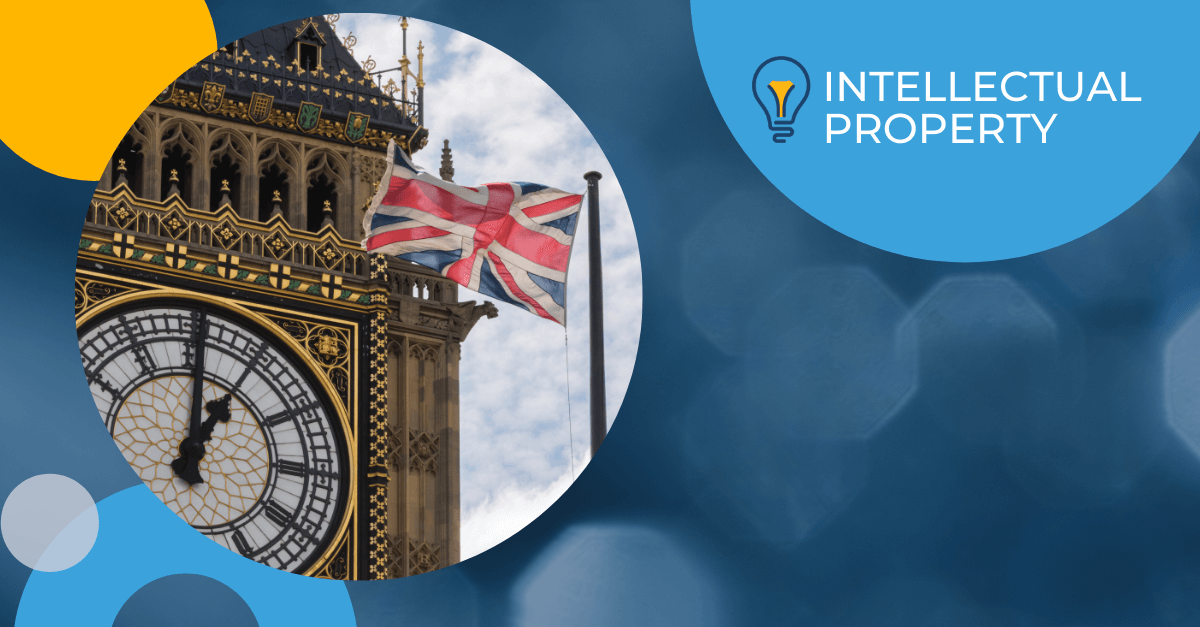
Before the United Kingdom made its exit — or “Brexit” — from the European Union (EU) on January 1, 2021, a great deal of work was done to minimize its disruption to intellectual property ownership.
Trademarks and Designs
For existing trademarks and designs, the transition has been simple and automatic. Upon Brexit, the UKIPO automatically created new, comparable UK registrations for trademarks and designs that were previously registered with the EUIPO. These cloned registrations confer intellectual property ownership within the UK only, as existing EUIPO registrations continued to confer rights only within the EU.
Recorded in the UK, these trademarks and designs:
- have the same legal status as if they had been applied for and registered under UK law
- kept the original filing date
- kept the original priority or UK seniority dates
- are a fully independent UK registration that can be challenged, assigned, licensed or renewed separately from the original EU registration that still applies in EU countries.
Recipients of the new UK registrations did not have to pay a new fee, nor did they receive a UK certificate. As a result, ownership is now proven by a screenshot of the registration on the UK government website.
For designs whose registration began in 2020 — the transition period leading up to full Brexit — a UK clone was created, and the three-year clock set in motion by the start of the registration process was set to continue.
Copyrights
Regarding copyrights, the UK government website says:
“Copyright is a national right that each country provides separately. However, copyright is largely harmonized internationally by a number of treaties. The Trade and Cooperation Agreement between the UK and EU builds on these international norms and maintains high standards of copyright protection between the UK and EU.”
Even so, some small number of existing cross-border copyright agreements — including for cable TV retransmissions and video-on-demand services — was based on the EU’s country-of-origin principle. As of January 1, all such arrangements were no longer valid and in need of renegotiation.
Get the latest insights delivered to your inbox
5 Tips for Pain-Free Cross-Border IP Litigation
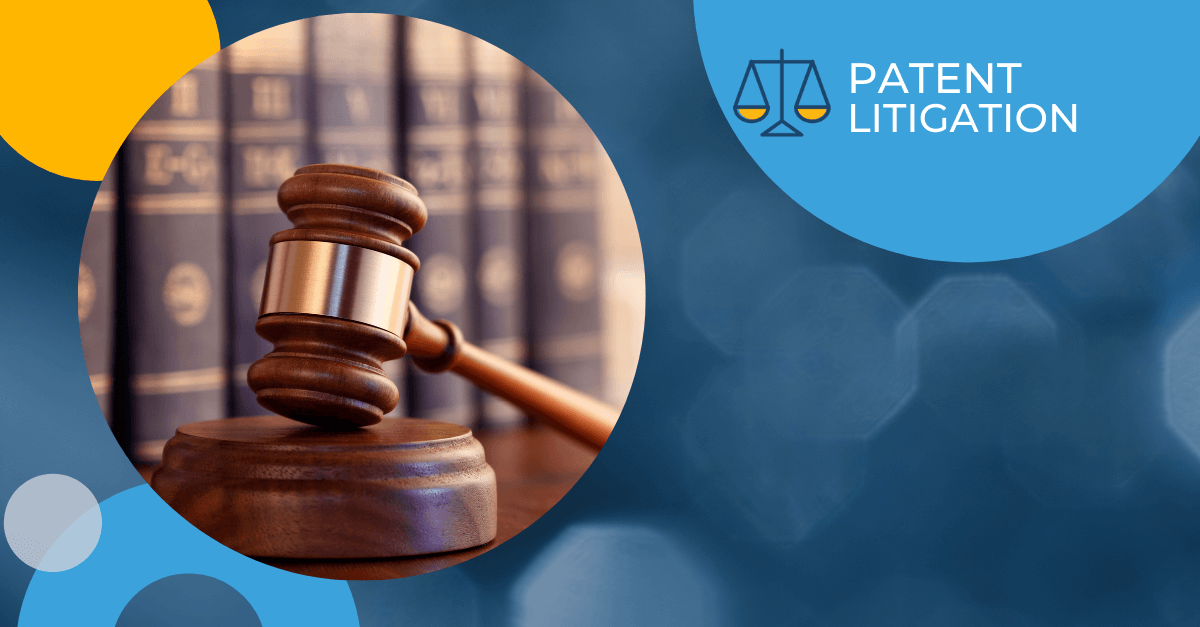
The number of patents in force worldwide has nearly doubled in the last decade – from 8.5 million in 2009 to 15 million in 2019. And alongside this boom in granted patents, there’s been an increase in IP litigation. In the US, for example, patent lawsuits were up 9% year-over-year in January 2020. Globally, these cases are also on the rise and can become much more complicated, time-consuming and expensive when they involve parties from different countries.
Fortunately, there are things you can do to make the cross-border IP litigation process less painful – while simultaneously increasing your chances for success. Obviously, hiring skilled legal representation with experience in international litigation is critical. Beyond that, you can save yourself a tremendous amount of stress, time, and money by working with an experienced legal translation service company. Here are five things you can do to ensure your cross-border litigation goes as smoothly as possible.
1. Develop a document inventory
As soon as possible, work with your legal team to compile a list of the documents that will need to be produced during the discovery process. This includes correspondence, supporting materials for depositions, filing documentation, and any other documents you’ll need in court.
Devise a process for sifting and reviewing your documents that works for everyone on your team who will need to access them.
2. Develop a translation strategy
Working from your documents inventory, identify the documents that will require translation (either for your team’s internal use or for delivery to other parties). Engage your legal translation company early in the process and share this list with them, clearly marking any foreign-language documents that will need to be translated and submitted to a court of law, arbitration tribunal, government office or regulatory body. (Those documents will require certified translations.) Then, you’ll need to agree on a delivery schedule for completed translations, and try to allow sufficient lead time to avoid expensive rush charges.
Note: It’s critical that you use a storage platform for translated documents that is secure and yet accessible to your team. Morningside, for example, offers document storage and sharing that’s ISO 27001-compliant, with multi-factor authentication, encryption, and backups to make certain that your materials remain safe and confidential.
3. Develop an interpretation strategy
Identify the in-person or remote proceedings for which you’ll require legal interpretation services (depositions, meetings, hearings, trials). Share that information with your legal translation provider so it can match you with an interpreter with the technical background and subject matter expertise relevant to your case.
Remember: Your interpreters should adhere to COVID-19 guidelines for in-person events. Morningside’s COVID-19 social distancing solutions help ensure the safety of all parties in such settings.
4. Create documents with foreign versions in mind
There are a few things you can do to ensure your English-language content remains effective in other languages:
- Avoid using cultural references and idiomatic phrases that may be unique to American culture and difficult or impossible to translate with the same denotative or connotative meaning.
- Keep sentence structure as simple as possible. Grammatical complexity varies from language to language, and it’s best to start off, at least, with straightforward text.
- Separate text from graphics so that it can be translated without requiring editing of the graphic itself.
5. Reduce the workload with specialized translation tools
For foreign-language discovery documents, ask your legal translation service if they can use specialized tools to cull your large data sets into more manageable chunks of case-relevant information. The application of filtering techniques like foreign language keyword searches, for example, can identify and remove irrelevant documents from the data set. Then machine translation (MT) can be used to determine the “gist” of what each document contains, helping determine which ones require more accurate human translation. For many documents, MT may be sufficient, leading to significant cost savings.
Expertise counts
At Morningside, our experienced legal translators and interpreters are highly qualified linguists with an academic and experiential background relevant to your case. Their skills and subject matter expertise ensure that your translated materials are accurate, and their work is backed by our ISO-certified multi-step quality-assurance system.
Get the latest insights delivered to your inbox
Trade Secrets vs Patents: Which is Right for You?
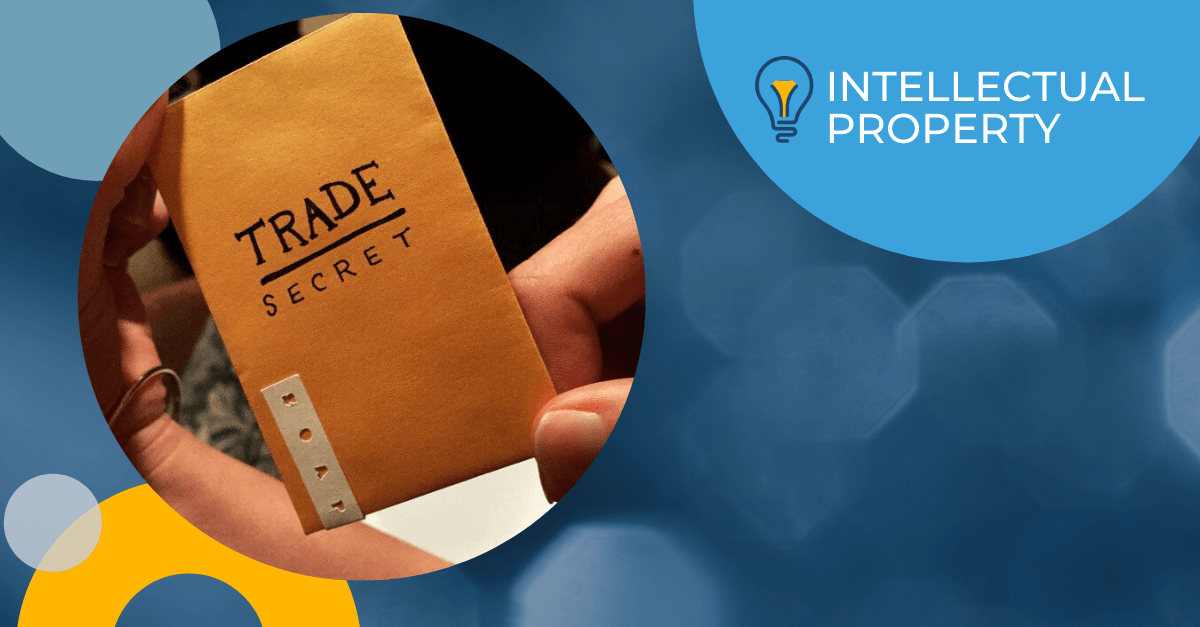
A company’s intellectual property is its number one asset. However, protecting that property through patents is expensive and doesn’t include certain types of content, including customer lists, which are crucial. A viable alternative is to classify intellectual property as a trade secret. The trade secret designation enjoys protection under US law, and the associated costs are significantly lower.
Patents require companies to disclose inventive properties publicly. Their protection is also limited in time, usually lasting no more than 20 years, while trade secrets remain protected indefinitely. Like Coca-Cola, which does not hold a patent on its secret cola-recipe, many companies choose to protect their secrets rather than disclose them in a patent application.
The advantages of patent protection, however, are significant. Even though the protection period is limited, its safeguards are considerably stronger. If independent invention occurs (through reverse engineering or otherwise), the original product, formula or process still enjoys patented protection.
Selecting whether a patent or a trade secret is the right methodology requires careful consideration, weighing the advantages and disadvantages of both options.
Trade Secrets vs. Patents
According to the Uniform Trade Secrets Act (UTSA), which protects trade secrets by permitting civil suits against disclosure of secrets through improper means, a trade secret is “information, including a formula, pattern, compilation, program, device, method, technique, or process that derives independent economic value” by remaining unknown. Famous examples of trade secrets include the algorithm for Google’s search rankings, the recipe for KFC’s chicken, and the criteria for the New York Times bestseller list.
In contrast, a patent grants its holder the exclusive right to make, sell, or import a product or process for a pre-determined period, usually up to 20 years. The patent holders gain a monopoly on the invention. Some trade secrets are unique and inventive enough to warrant patent protection, but that would require disclosing the information publicly and spending considerable sums obtaining patent protection. Companies need to choose which path offers a better return on investment and fits their overall risk strategy.
However, some secrets do not qualify for patents because they are not sufficiently inventive to be granted exclusive rights or fall into areas not covered by patents, such as abstract ideas. In those cases, designation as a trade secret is the only way to protect the information or process.
Significant price difference
The most substantial advantage of a trade secret designation over a patent is cost. Patent applications are legal documents that must include great detail and are often technical. Patents must be filed with the relevant patent offices, followed by a patent search and examination. If the patent is granted, you will also need to pay annuity fees to maintain it. The bottom line: drafting, filing and maintaining a patent requires professional involvement at every level. The process is expensive and time-consuming.
However, a trade secret does not need to be filed or approved. There are no filing fees, legal fees, or patent translation fees. It need only be designated as a secret. The designation takes effect immediately, in contrast to a patent application, which could take years.
Although it’s not required, a company may choose to invest in protecting its trade secrets through non-disclosure agreements (NDA). But filing a UTSA claim in the event of stolen trade secret information does not require that an NDA was in place. A protection claim only requires that the claimant demonstrate that a reasonable effort was made to protect the information and prove that the information was wrongly acquired. A “reasonable effort” could mean physically keeping people away from restricted areas or securing susceptible documents.
Additional advantages of trade secrets
With trade secrets, added value is often derived from the secrecy itself and what the secret is protecting. For example, a change in Google’s algorithm generates waves of buzz. Leaks of unreleased iPhones promote the product better than paid advertisements. People naturally gravitate toward the hidden and mysterious, providing intrinsic value in products with a secret component.
Another big benefit of trade secrets is the indefinite protection period, especially for companies with long-term interests. If Coca-Cola had filed for a patent when the company began selling classic Coke, its recipe would have been open to the public a long time ago. Competitors could have created generic versions of the drink that would be indistinguishable from the original.
Finally, when it comes to trade secrets, no government agencies are regulating them or compliance procedures to follow. As long as the secret is kept from public knowledge, the company continues to benefit from it without any reporting requirements.
When patents are preferable to trade secrets
Choosing the protection of trade secrets over patents is not risk-free, however. While a patent will only remain in effect for 20 years or less, its protection is considerably stronger. Trade secret protection only applies to unlawful breaches. It does not bar parties from legitimate duplication efforts such as reverse engineering to arrive at the secret independently.
Designating a trade secret does not prevent another party from developing its own version of the product, process, or formula independently. A rival company could even file a patent for the process and claim an exclusive right, completely shutting out the original inventor.
Finally, a company must remain vigilant about protecting its trade secret. Unintentional trade secret disclosure could upend the process and leave the company empty-handed. If company executives are lax about non-disclosure agreements, someone with access to the secret could reveal it. Once a secret is publicly known, it is no longer protected.
Choosing the right approach
Designating information as trade secrets or filing for patents are alternative strategies to protecting intellectual property; both offer advantages and drawbacks.
While they may be expensive and time-consuming to secure, Patents provide extremely effective protection for a limited period: a company with exclusive use of a product or process will command the market for 20 years. It can build brand recognition and market leadership during that period to remain a top industry player even after the patent expires.
While a well-kept trade secret could be secret indefinitely, it’s important to recognize that it is perfectly legal to reverse engineer or copy a trade secret. A patent may only last 20 years, but the protection is stronger during that era: independent invention is no defense in a patent suit.
To select the right option, a company must investigate two factors:
- Is 20 years a sufficient period of protection?
- Is a competitor likely to reverse engineer or independently reproduce the product during that period?
Think long-term before determining whether a patent or trade secret is right for you. Be sure to make these determinations independently regarding each product, process or formula.
About Morningside:
Morningside equips the world’s leading organizations with a full suite of end-to-end intellectual property and language solutions. With over 4,000 clients in 55 countries, Morningside is globally recognized for its subject matter expertise and technology innovation in regulated markets such as IP, legal services, life sciences, and corporate compliance. Our IP management solutions and translation services ensure your ideas reach new markets and audiences seamlessly while allowing you to do more with your budget. Global 500 companies, international law firms, and regulatory bodies rely on Morningside as a trusted partner to make intelligent choices for their most valuable assets. www.morningtrans.com
About Questel:
Questel’s mission is to facilitate the development of innovation in an efficient, secure, and sustainable way. Questel is a true end-to-end intellectual property solutions provider to over 15,000 clients and one million users across 30 countries. We offer a comprehensive software suite for searching, analyzing, and managing inventions and IP assets. Questel also provides services throughout the IP lifecycle, including prior art searches, patent drafting, international filing, translation, and renewals. When combined with our IP cost management platform, these solutions deliver clients an average savings of 30-60% across the entire prosecution budget. www.questel.com



